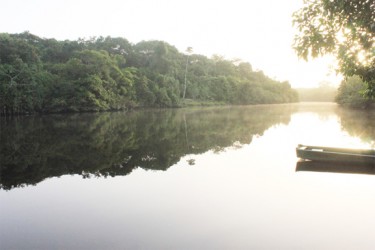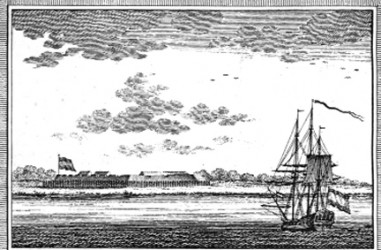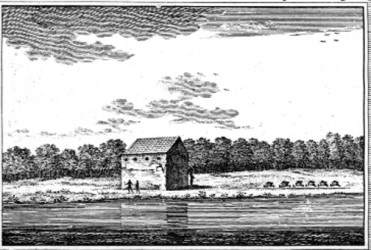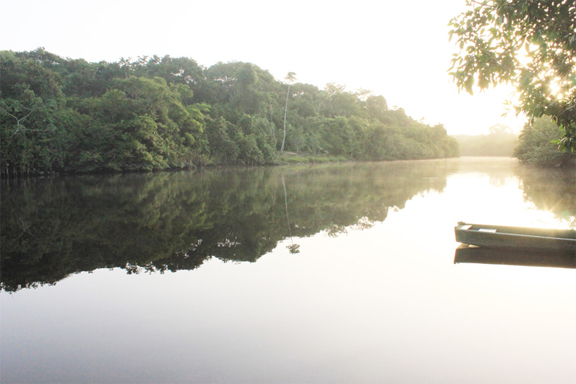This is an edited version of an article which first appeared under the A.J. McR. Cameron Column in Stabroek News on February 20, 1988
While the Great Uprising of 1763 is an event of great significance in Guyanese and Caribbean history, strangely, surprisingly little is known about it, and it is this lack of information which has given rise to various myths, one of which relates to the Plantation of Magdalenenburg in Canje. This myth in particular has become firmly embedded in the public consciousness, and in turn has created others.
What we know at present about Magdalenenburg is that early in the morning of February 23, 1763, just as the enslaved of the plantation were going out into the fields, the bomba (driver) struck the manager a blow, whereupon all the others joined in. They then went back to the house to find the carpenter, whom they also killed.
After breaking open the chests and cupboards where the firearms had been locked away, they moved on to La Providence, the estate next door, to try and persuade the slaves there to join them. The people on this estate were not very enthusiastic about the idea, however, and some of them helped their manager to escape. In the end, only 10 of them could be induced to join up with the 73 Magdalenenburgers.

The rebels then went back to Magdalenenburg to celebrate, but seem to have made no attempt to spread the little revolt any further. In due course, they decided to move to the Corentyne River, which at that time fell under Suriname’s jurisdiction. They were probably aware that Governor Van Hoogenheim of Berbice would eventually mobilize some forces to deal with them, and that in the circumstances retreat probably constituted their safest course of action.
Van Hoogenheim did indeed send a party of armed sailors to crush the revolt on February 24, but when this party arrived it found that the rebels had already left for the Corentyne. Once in the Corentyne, the Magdalenenburgers launched an attack on a small military post maintained by the colony of Suriname, and chased away two men there. The Postholder, who was in charge of the Post, but had been absent on the day of the attack, then wrote to Van Hoogenheim asking for his assistance.
Van Hoogenheim by this time had his hands full with a far more menacing Uprising which had broken out on the Berbice River proper, and replied that he could not help. The Postholder then turned to his own Suriname Governor for assistance, who as will be recounted below, did eventually send a military detachment to help him.
The background to this Magdalenenburg revolt is not really known. The Netherlands Year Book of 1763, the only source to venture some opinion on the matter, simply says that the bomba had “conceived a dislike of the manager.” The owners of the plantation, the Vernesobre family, who were probably of French Huguenot extraction, apparently had a reputation for cruelty in the Guianas. Even Essequibo Governor, Storm van ’s Gravesande had heard of them, and he deemed them worse than barbarians. In addition, in a colony with a comparatively low incidence of slave revolts, the Vernesobres had a record. An earlier rebellion had occurred on one of their holdings, Monbijoux, either at the end of 1733 or at the beginning of 1734.

The Magdalenenburg revolt of February 23, has caused great confusion for historians, because it has become erroneously associated with the Great Uprising of 1763, which was led by Coffy (Kofi, Cuffy) and broke out on February 27,1763. Unfortunately, there is no evidence to link Coffy with the action of the 23rd, and there is certainly nothing to substantiate the myth that he was ever on Magdalenenburg at any time.
This does not mean to say, of course, that there are no links of any kind between the two revolts, although it is unlikely now that we shall ever be in a position to establish finally what those were, if any. It is possible, however, that the Magdalenenburgers had heard rumours of an impending Uprising on the Berbice River proper, and took their own action in the light of that information. Conversely, it is known that news of what had happened on the 23rd circulated very quickly around the colony, and it is not inconceivable that this had some psychological effect on the conspirators who were responsible for the Great Uprising of February 27.
Either way, the Magdalenenburgers seem to have made no attempt to join up with Coffy’s Uprising, and aside from some raids into the Canje in March, they stayed put in the Corentyne, where they set up a maroon encampment. Although they showed no inclination to become part of the general Uprising, the Dutch still regarded them as a very serious threat, because of the fear they might join themselves with the Saramaccas — the maroons of Suriname. It is for this reason that the Governor of Suriname was prepared to send his own troops to deal with them, even though technically they belonged to Berbice.
Governor Crommelin’s first detachments sent to the Corentyne never reached there at all for one reason or another. Nevertheless, according to Dutch historian Ineke Velzing, the Caribs of that river went into action on their own, attacking the Magdalenenburgers on March 24. In this battle 26 Magdalenenburgers were killed, while the remainder were split during the retreat, half of them being isolated on the opposite side of the river.

Crommelin’s last military detachment of about 70 men, finally did arrive safely in the Corentyne in June 1763. After linking forces with the Caribs, they attacked the Magdalenenburg maroons on the 18th of that month, and in that battle the rebels were all but wiped out.
It is at this point that the Magdalenenburg story merges into that of the main Uprising, for in a quarrel over the division of booty, the Suriname soldiers, led by a Frenchman named Jean Renaud and a German surgeon named Mangemeister, deserted the Dutch and went to join Coffy.

